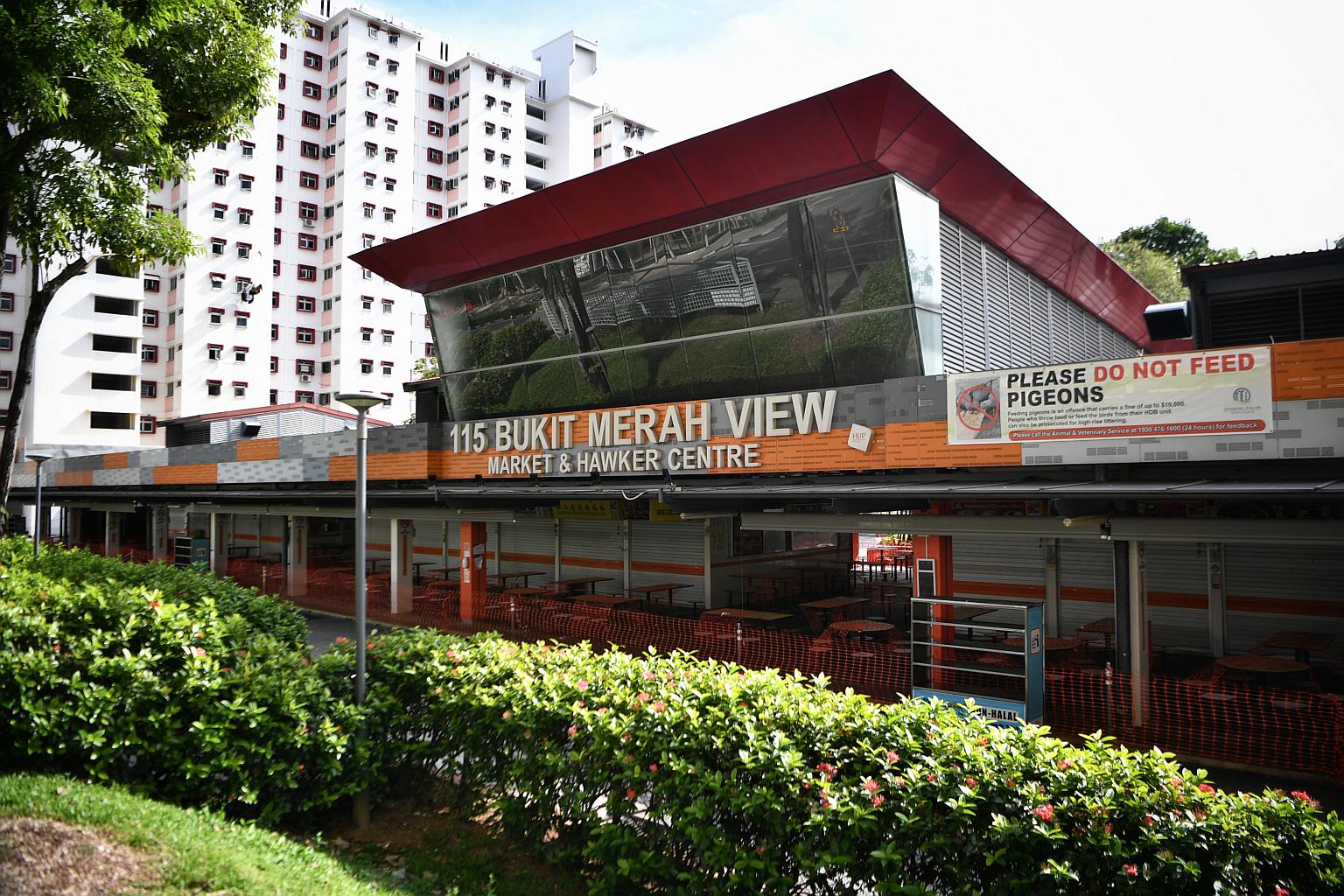Covid-19 infection at Bukit Merah View market possibly spread through common facilities, long queues
Sign up now: Get ST's newsletters delivered to your inbox

Long queues at popular food stalls at the Bukit Merah View Market and Food Centre could have been a factor for the Covid-19 outbreak.
PHOTO: ST FILE
Toh Ting Wei
Follow topic:
SINGAPORE - A number of factors at the Bukit Merah View Market and Food Centre could have together led to the Covid-19 outbreak there, although the specific causes have not been pinned down yet, the multi-ministry task force tackling the pandemic has said.
Among the possible reasons are the use of common facilities at the centre and long queues at popular stalls which led to some people waiting in line for half an hour or more for their food, said Associate Professor Kenneth Mak, Singapore's director of medical services.
"Some of the cases we have interviewed have reported queueing up for at least 30 minutes, which would ordinarily be considered a significant period of close contact if these visitors were close together," he said.
Prof Mak was speaking during a virtual press conference by the task force on Friday (June 18) to give an update about Singapore's next phase of reopening from the current Covid-19 restrictions.
He said that as at Thursday, there were 56 cases of infections in the Bukit Merah View cluster.
Of these, 21 of the cases are staff or vendors, and 13 are visitors to the market or food centre. The remaining cases are people who were likely infected with the virus by those who had visited the centre, said Prof Mak.
"It's still not possible for us to pin down specific modes of transmission," he said.
"But it's very likely that amongst tenants, stallholders and staff working at both the market and the food centre, close contact amongst them would have contributed to exposure and spread both in mask-off and mask-on settings."
Experts have told The Straits Times that the compact nature of certain food centres and wet markets could also have been a contributory factor to the spread of infection, despite there being natural ventilation in such open-air settings.
The spread of the coronavirus could also have occurred through the use of common facilities, including the toilet, Prof Mak added.
Several precautions have since been taken in the light of the growing number of cases around the area, he noted. For instance, mandatory swab operations have been carried out for staff and vendors in the area, and voluntary testing has been offered to visitors to the market.
Prof Mak said that the Health Ministry is also studying other Covid-19 clusters that have emerged near the Bukit Merah View market, and is looking to see whether there are any links that can be established between them and the Bukit Merah View cluster.
MOH is conducting investigations on the cases to trace their origins, and will report the results when they become available.
Prof Mak also encouraged those who have yet to be vaccinated to register for it and get vaccinated.
Citing the example of the Bukit Merah View cluster, he said 32 per cent of cases have been vaccinated, but 50 per cent have yet to receive the vaccine.
The rest of the cases have either received just one dose of the vaccine, or have not yet derived the full protection afforded by the vaccination's two doses.
"This does support the view that vaccination does protect you and reduce the risk of you getting infected, as opposed to those who are not vaccinated," he said.
In response to a question about why the authorities will allow dining-in in groups of two at hawker centres from next Monday despite the recent Bukit Merah View market cases, Trade and Industry Minister Gan Kim Yong said the risk of transmission is not specific to hawker centres.
Instead, it is related to the nature of the activity, which is people having to take off their masks while they eat, said Mr Gan, who co-chairs the Covid-19 task force.
He also noted that a portion of the cases in the Bukit Merah View cluster were actually staff in retail shops selling non-food items.
"So the rules that we have put in place is a more cautious approach, a calibrated approach, taking into account the higher-risk nature of the activity that we see in the eating places," said Mr Gan.
On another question about the risks of Covid-19 transmission brought about by queues, Prof Mak said that the risk could be multiplied if people are queuing for a prolonged period without safe distancing.
"So it's always better if situations like that are likely to occur, consider coming back another day or going somewhere else which is less crowded; mitigate the risk for yourself to avoid putting yourself in such a situation," he added.

